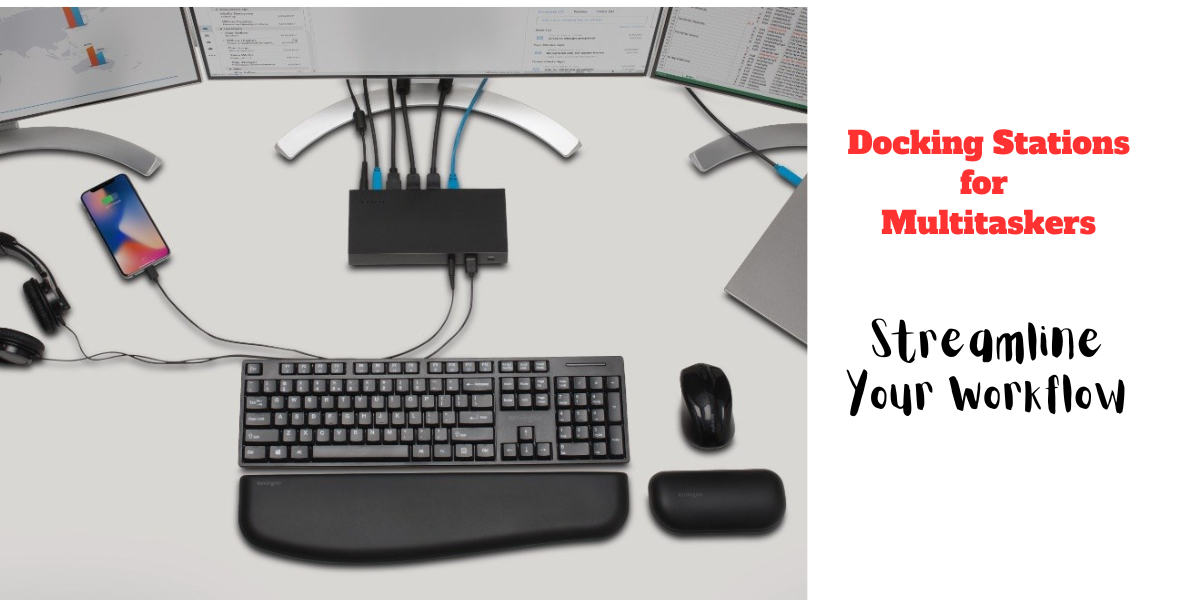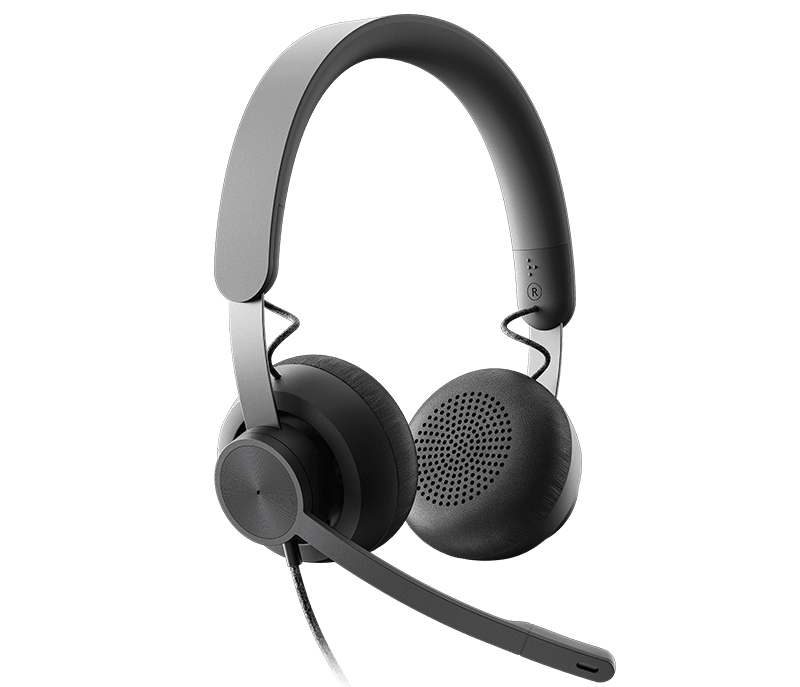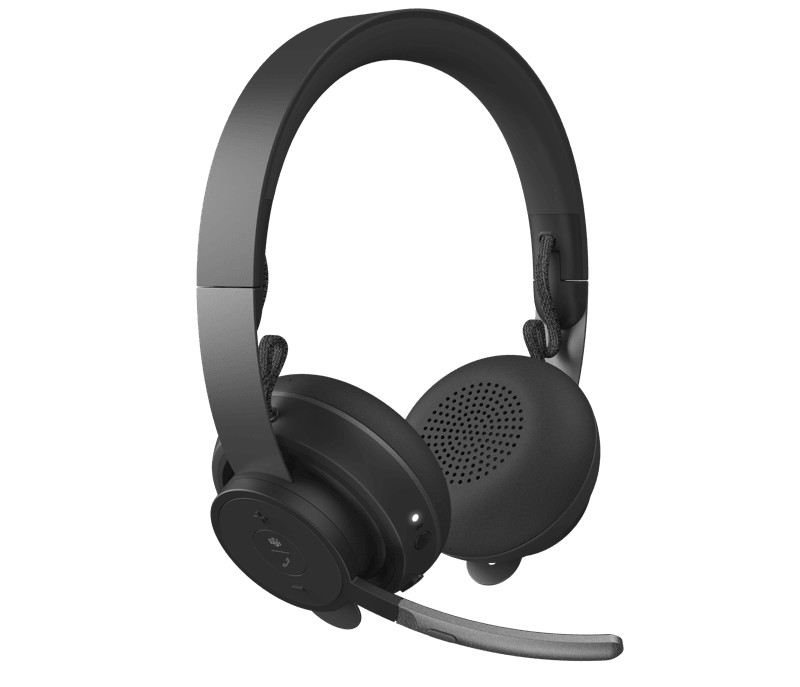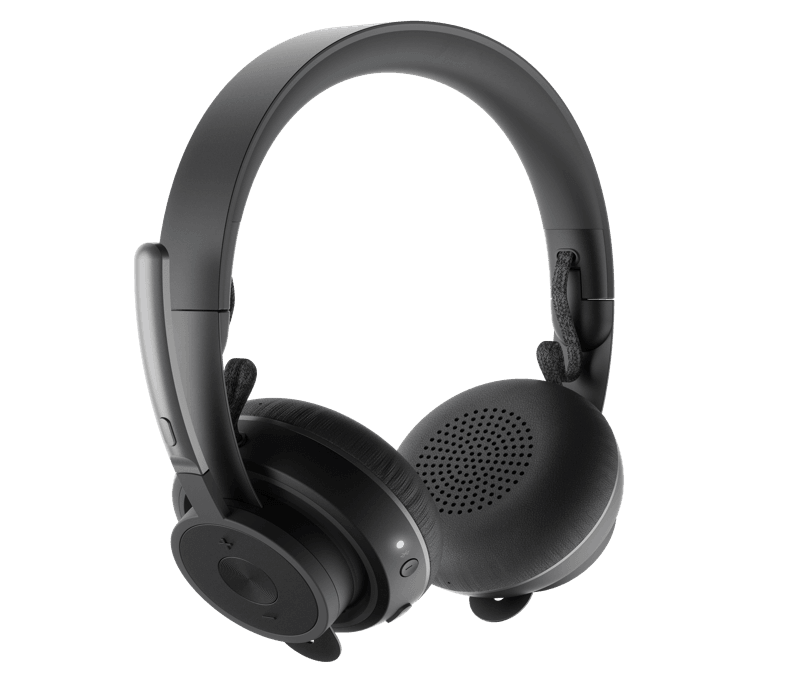The Importance of Multitasking in Today's Fast-Paced World
In today's world, we are constantly on the go and trying to make the most of our time. We juggle multiple tasks at once, from checking emails and social media to working on important projects and attending virtual meetings. The ability to multitask has become a valuable skill, allowing us to be more productive and efficient in our daily lives.
Multitasking helps us manage our time effectively by allowing us to complete more tasks in a shorter amount of time. It also enables us to switch between tasks quickly and seamlessly, reducing the amount of time we waste transitioning between different activities.
However, with so many devices and tools available for multitasking, it can be overwhelming to keep them all organized and accessible. This is where docking stations come in as a solution for streamlining workflow.
Docking Stations: The Solution for Streamlining Workflow

Docking stations are an essential tool for anyone who wants to improve their productivity while minimizing clutter on their desk. They serve as a central hub that allows you to connect multiple devices such as laptops, smartphones, tablets, monitors, printers, keyboards and mice all at once.
Docking stations offer several benefits such as increased productivity by providing easy access to all your connected devices without having to switch cables or connectors repeatedly. They also allow you to work with multiple screens simultaneously without compromising clarity or speed.
Moreover, docking stations offer an organized space for charging your devices while keeping them secure during use. With proper cable management provided by docking stations like those that have adjustable clips or cable ties included in their design; it's much easier than before even if you happen to have many devices plugged into it at the same time!
In addition, docking stations save you from unnecessary wear-and-tear on your device ports since they provide additional ports thus reducing the risk of damaging them due frequent plugging and unplugging of devices. In today's fast-paced world, it is critical to have tools that can help us be more productive and efficient.
Docking stations are an excellent solution for streamlining your workflow by providing easy access to all your connected devices while reducing clutter on your workspace. They are an investment worth considering if you want to take your multitasking skills to the next level.
What are Docking Stations?

Docking stations are devices that allow you to connect multiple peripherals and devices to your computer with one simple connection. They provide a central hub for all your devices and can greatly streamline your workflow. Docking stations are especially useful for people who use laptops as their primary device, but need the functionality of a desktop computer.
This is because laptops often have limited ports available, making it difficult to connect all the necessary peripherals. Docking stations solve this problem by providing additional ports for multiple displays, USB devices, Ethernet cables, and more.
Types of Docking Stations
There are several types of docking stations available in the market today:

1.USB Docking Stations: These types of docking stations connect to your laptop via USB and provide additional ports for other devices like monitors, keyboards, mice and Ethernet cables.

2.Thunderbolt Docking Stations: Thunderbolt docking stations use Thunderbolt technology (which is similar to USB-C) to provide high-speed data transfer between your laptop and peripheral devices.

3.Laptop-Specific Docking Stations: Some laptop manufacturers offer specific docking stations designed specifically for their laptops. These can provide better integration with the laptop's hardware than generic docking stations.

4. Wireless Docking Stations: Wireless docking stations use Wi-Fi technology to connect peripheral devices wirelessly to your laptop or desktop computer.
The Benefits of Using Docking Stations for Multitaskers
In today's fast-paced world, multitasking is a necessary skill. Whether you're working from home, in the office, or on-the-go, you need to be able to juggle multiple tasks and devices at once.
This is where docking stations come in handy. Docking stations offer a myriad of benefits that can make your life easier and more productive.
Increased Productivity and Efficiency
One of the biggest advantages of using a docking station is increased productivity and efficiency. With a docking station, you can connect all your devices to one central hub. This means that you don't have to waste time switching between different devices or plugging and unplugging cables every time you need to use something new.
A docking station allows you to quickly switch between tasks without any interruptions or delays. For example, if you're working on an important project that requires both your laptop and your smartphone, you can easily switch between the two without losing any momentum.
Reduced Clutter on Your Desk
Another benefit of using a docking station is reduced clutter on your desk. If you're like most people, your workspace is probably cluttered with cables, chargers, and other gadgets. This not only looks messy but can also be distracting.
With a docking station, all your cables are neatly organized and hidden from view. This not only makes your workspace look cleaner but also reduces the risk of accidentally unplugging something important.
Easy Access to All Your Devices
Using a docking station gives you easy access to all your devices. Instead of having to search for the right cable or adapter every time you need to connect something new, everything is already plugged in and ready to go.
This means that if you need to quickly transfer files from your camera or connect an external hard drive, you can do so without any hassle. With a docking station, all your devices are just a click away.
Conclusion
Using a docking station can greatly improve your workflow and make your life easier. By increasing productivity and efficiency, reducing clutter on your desk, and providing easy access to all your devices, a docking station is an essential tool for any multitasker. Whether you're working from home or in the office, investing in a good docking station is definitely worth it.
Features to Look for When Choosing a Docking Station
When it comes to choosing the right docking station for your needs, there are several key features that you should consider. These features will not only ensure that your devices connect seamlessly, but they will also help you streamline your workflow and improve your productivity.
Compatibility with Your Devices
Perhaps the most important feature to consider when choosing a docking station is compatibility with your devices. You’ll want to make sure that the docking station you choose is compatible with all of the devices you plan on connecting.
Make a list of all the devices you want to connect, such as laptops, smartphones, tablets, and external hard drives. Then look for a docking station that supports all of these devices.
Some docking stations are designed specifically for certain brands or models of laptops or smartphones. Be sure to check if the dock is compatible with your device before making a purchase.
Number and Type of Ports Available
Another important feature to consider when choosing a docking station is the number and type of ports available. The more ports available on a dock, the more devices it can support. Look for docks that have USB-C ports as they can provide faster data transfer and power delivery than other types of ports.
If you need additional USB-A or HDMI ports for external monitors, make sure they are included in the dock. HDMI 2.0 port allows outputting up to 4K resolution at 60Hz on an external monitor which is highly recommended if you work with multimedia content creation or video editing applications.
Power Delivery Capacity
If you plan on using your docking station to charge your laptop or other devices while they’re connected, make sure it has adequate power delivery capacity.
You don't want a situation where one device's charging slows down due not enough power being provided by dock. Check the power delivery capacity of the dock and ensure it meets your charging needs.
Most laptops, for example, require at least 65 watts of power to charge properly. Some docking stations can provide up to 100 watts, which is more than enough to charge multiple devices simultaneously.
Brand Warranty
When deciding on a docking station for your devices, it's important to consider the brand warranty that comes along with the product. Some brands offer a longer warranty period than others and will cover repairs or replacements free of cost if their products fail within the warranty period. Make sure to do research on what type of customer service is offered by each manufacturer before choosing a product.
Noise and Heat Dissipation
You’ll want to consider how much noise and heat your docking station generates while in use. A noisy and hot dock can be distracting and uncomfortable when working for long hours. Look for a dock that has good heat dissipation, which will keep your devices cool even when running at full capacity.
A quieter fan system or even passive cooling systems are better options if you prefer quiet workspace or using audio equipment like USB microphones. When you consider these features while choosing a docking station that meets your requirements it gives you peace of mind so you can focus on getting work done without worrying about compatibility issues or other technical glitches.
Setting Up Your Docking Station
Step-by-Step Guide on How to Set Up Your Docking Station
Once you have purchased your docking station, setting it up is a piece of cake. First, connect the docking station to a power source using its power cable.
Then, connect the docking station to your computer using a USB or Thunderbolt cable. Note that some docking stations require specific cables, so make sure you read the manual carefully before purchasing.
Next, connect all your peripheral devices such as monitors, external hard drives, and keyboards to the docking station's ports. You may need adapters for some devices if the ports on your docking station are not compatible with them.
Turn on your computer and check that all your devices are functioning correctly. If there are any issues, check that all cables are securely connected and consult the user manual for troubleshooting tips.
Tips on Organizing Cables and Keeping Your Workspace Tidy
One of the major benefits of using a docking station is reducing clutter on your desk by centralizing all your devices in one place. However, without proper cable management, even a well-organized setup can quickly become messy. To keep things organized, start by labeling all cables with tags or colored markers to identify which device they belong to.
This will save time when unplugging devices in future setups. Next, use cable ties or clips to group cables together neatly and keep them from tangling.
You can also use adhesive clips to attach cables underneath or behind desks for an even cleaner look. Another helpful tip is arranging peripherals in order of importance or frequency of use so that you don't have to move things around constantly.
For example, place frequently used items such as keyboards and mice within easy reach while placing less frequently used items like external hard drives further away. By following these simple tips for organizing cables and keeping your workspace tidy, you can enjoy the full benefits of your docking station without having to deal with clutter and disorganization.
Conclusion
Recap on the benefits of using a docking station for multitasking
In today's fast-paced world, multitasking has become a necessity rather than an option. Docking stations are an excellent solution for those who need to streamline their workflow and manage multiple devices efficiently.
Using a docking station can increase productivity and reduce clutter on your desk. Docking stations come in various shapes, sizes, and configurations to meet different needs.
They allow you to connect multiple devices such as laptops, monitors, keyboards, and mice through a single USB-C or Thunderbolt port. With the right docking station, you can expand your workspace and enjoy easy access to all your peripherals.
The benefits of using a docking station for multitasking are numerous. They include increased productivity, reduced clutter on your desk, easy access to all your devices, and improved performance from high-speed data transfer rates.
Final thoughts and recommendations
If you're constantly switching between different devices while working or studying at home or in the office, investing in a docking station is an excellent idea. The right dock will allow you to connect multiple displays and peripherals while charging up your laptop at the same time.
When choosing a docking station for multitasking purposes there are several things to consider like compatibility with your device(s), number of ports available (USB-C/Thunderbolt 3), power delivery capacity (can it charge your device?). Make sure it meets all of these criteria before making any purchase decisions.
It's important to note that not all docks are created equal – some may be better suited for certain tasks than others depending on what you need them for. Consider how much power delivery capacity you require before making any decisions as well!
Ultimately the best dock depends on personal preference – there isn't one size fits all solution when It comes down to finding the perfect fit! However by following the above recommendations and not settling for less than what you need, You can create an ideal workspace that streamlines your workflow and helps you get more done in less time!












